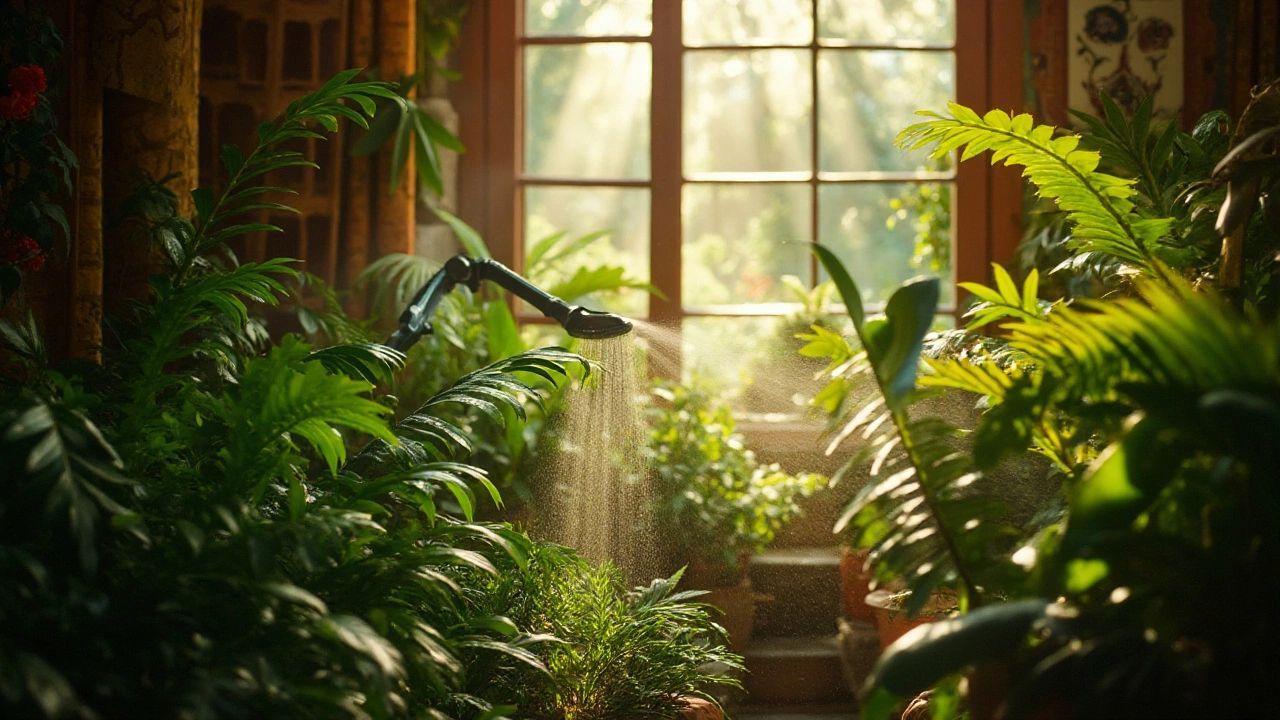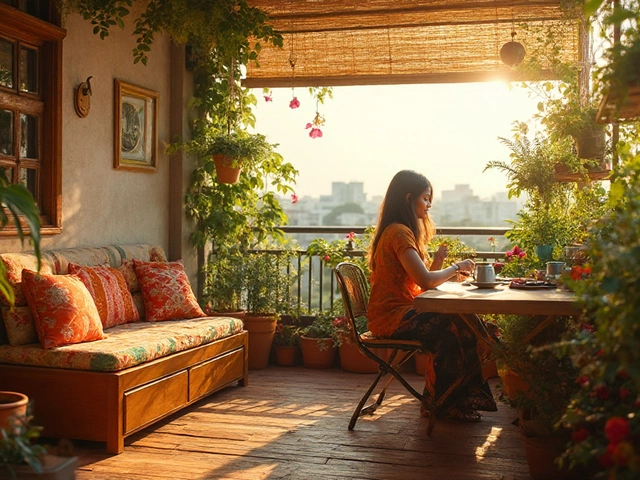Misting Plants: How to Boost Your Indoor Garden’s Health
Ever wonder why some of your houseplants look droopy while others stay perky? One big reason is humidity, and a quick spray can make a huge difference. In India’s dry winters or air‑conditioned rooms, misting is a cheap, easy way to give tropical plants the moisture they love.
Why misting matters for indoor plants
Many popular houseplants—like ferns, orchids, and pothos—come from rainforest under‑canopy where the air is naturally humid. When you bring them inside, the air can drop to 30‑40% relative humidity, which stresses the leaves. You’ll see brown tips, curled fronds, or a dusty look. A light mist adds a temporary boost, raising leaf surface humidity and helping stomata stay open for better gas exchange.
Don’t confuse misting with watering. Misting only wets the leaf surface; the soil stays dry. That’s why it’s perfect for plants that hate soggy roots but need a humid leaf environment.
Practical misting techniques
How often? Aim for 2‑3 sprays per day during hot, dry months, and once a day in milder weather. If you notice tiny water droplets hanging on leaves for more than an hour, you’ve over‑misted.
Best time of day? Early morning or late evening works best. Morning mist dries quickly, reducing fungal risk, while evening mist helps plants recover from daytime heat.
What to use? A clean spray bottle with a fine mist setting is ideal. Fill it with room‑temperature tap water; let it sit for a few hours to let chlorine evaporate, especially if your supply is heavily chlorinated.
Which plants need it? Ferns, calatheas, anthuriums, and air‑plants love a daily mist. Succulents and cacti usually dislike it—skip misting and focus on good airflow instead.
Common mistakes to avoid:
- Spraying leaves when the sun is harsh—water droplets can act like tiny lenses and burn the leaf.
- Using hard water—minerals can leave spots on leaves. If you have hard water, switch to filtered or rainwater.
- Misting too heavily—wet leaves for long periods invite mold and fungus.
If you prefer a set‑and‑forget approach, consider a small humidifier placed near your plant cluster. It maintains steady humidity without daily effort.
Another quick hack: group plants together. They create a micro‑climate that naturally raises humidity, reducing the misting workload.
Remember to check the soil before you water. Misting does not replace regular watering; keep an eye on the pot’s weight and let the top inch of soil dry out between waterings.
Finally, a simple checklist:
- Identify humidity‑loving plants.
- Use a fine‑mist spray bottle with room‑temperature water.
- Mist early morning or late evening, 2‑3 times a day in dry seasons.
- Avoid misting succulents and cacti.
- Watch for signs of over‑misting—persistent droplets or leaf spots.
With these easy steps, your indoor garden will stay fresh, green, and happy, even when the outside air is bone dry. Happy misting!

Should I Mist My Happy Plant? Unpacking the Benefits and Myths
Misting plants can be a common practice among plant enthusiasts, but is it truly necessary for your indoor greenery to thrive? This article explores the fundamentals of misting, debunking myths and offering practical tips on keeping your plants happy and healthy. Whether you're nurturing ferns or succulents, understanding their humidity needs is crucial. We also discuss how to spot signs of overwatering and when it might be better to let nature take its course.

Essential Guide: Indoor Plants That Thrive with Misting
Misting is an important practice for indoor plant enthusiasts looking to create humid environments that replicate tropical habitats. Not all plants benefit from misting, but those that do display healthier leaves and sustained growth. Understanding which plants require misting and how often to do it is crucial. This article provides insights on misting techniques that can transform your indoor garden.
About
Indoor Plant Care
Latest Posts


Broccoli Farming in India: Profit Secrets, Tips, and Market Dynamics
By Alden Thorne Aug 7, 2025

Drip Tape vs Drip Line: The Ultimate Guide for Efficient Watering
By Alden Thorne Jul 21, 2025

Are Potatoes Native to India? Discover the Truth
By Alden Thorne Apr 7, 2025
